




When it comes to operating your washing machine efficiently and effectively, there are a few important considerations to keep in mind. One often overlooked aspect is the positioning of the drain hose. Many people may not realize that elevating the drain hose can have a significant impact on the performance and longevity of their washing machine.
Why is elevating the drain hose important?
Elevating the drain hose of your washing machine is crucial because it helps to prevent problems such as water backflow and drain blockages. When the drain hose is positioned too low or lies flat on the floor, it can create a siphoning effect, which may cause dirty water to flow back into the machine or prevent proper drainage. This can not only lead to unpleasant odours and potential damage to the machine, but it can also result in clothes not being thoroughly cleaned.
How to properly elevate the drain hose?
To ensure the optimal performance of your washing machine, it is recommended to elevate the drain hose at least 3 feet above the floor. This can be achieved by attaching the hose to the wall behind the machine using a hook or by securing it to the back of the machine itself. It is important to ensure that the hose is not stretched or kinked, as this can also affect the flow of water.
Remember to periodically inspect the drain hose for any signs of wear and tear, and replace it if necessary. Additionally, avoid using extensions or adding extra lengths to the drain hose, as this can impact the machine’s ability to drain properly.
In conclusion, elevating the drain hose of your washing machine is a simple yet important step to ensure optimal performance and prevent potential issues. By taking the time to properly position the drain hose, you can enhance the efficiency of your washing machine and prolong its lifespan.
Why You Should Elevate the Drain Hose of Your Washing Machine?
Properly elevating the drain hose of your washing machine is an important step in ensuring the machine functions efficiently and avoids potential problems. Elevating the drain hose has several benefits:
Prevents Backflow
Elevating the drain hose of your washing machine helps prevent backflow of dirty water into the machine. When the drain hose is not elevated, gravity can cause the water to flow back into the machine, potentially contaminating your clothes and causing the machine to become clogged or damaged.
Improves Drainage
By elevating the drain hose, you provide a more direct and unobstructed path for the water to flow out of the machine. This helps improve the drainage process, allowing the machine to empty faster and more efficiently. Effective drainage reduces the risk of standing water, which can lead to unpleasant odors and the growth of bacteria.
Prevents Clogs
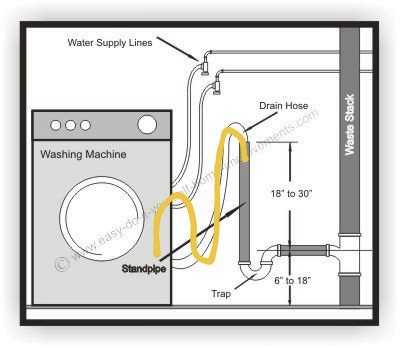
When the drain hose is not properly elevated, it can become kinked or bent, which can lead to clogs in the hose. Clogs can prevent proper water drainage and cause the machine to overflow or stop working altogether. Elevating the drain hose helps minimize the risk of clogs and ensures smooth water flow.
Reduces Machine Stress
Properly elevating the drain hose of your washing machine can reduce stress on the machine’s pump. When the hose is elevated, it allows the water to flow freely and reduces the strain on the pump, which can extend the lifespan of the machine and prevent unnecessary repairs or replacements.
Prevents Water Damage
If the drain hose is not elevated, there is a higher risk of water leakage and damage. Water can overflow from the machine or leak from the hose connection, leading to potential damage to your floors, walls, and surrounding areas. By elevating the drain hose, you help contain the water within the designated drainage system and minimize the risk of water damage.
Overall, elevating the drain hose of your washing machine is a simple yet effective way to optimize its performance, prevent potential problems, and improve its overall lifespan. Take the time to ensure that your drain hose is properly elevated to enjoy the benefits of a well-functioning washing machine.
Preventing Water Damage
Introduction
Water damage caused by a malfunctioning washing machine can be a costly and inconvenient problem to deal with. Fortunately, there are steps you can take to prevent this kind of damage and protect your home.
1. Proper Installation
Ensuring that your washing machine is properly installed is the first step in preventing water damage. Make sure that the machine is level and securely connected to the water supply and drain hoses. It is also important to check the hoses regularly for any signs of wear or leaks.
TIP: Consider installing a flood sensor near the washing machine. This device will alert you if it detects any water leakage, allowing you to address the issue before it becomes a major problem.
2. Elevate the Drain Hose
Elevating the drain hose of your washing machine can help prevent water damage. This can be done by attaching the hose to a bracket or hook, ensuring that it is positioned higher than the level of the machine’s drum. This way, water will not flow back into the machine in the event of a clog or blockage in the drain pipe.
3. Regular Maintenance
Maintaining your washing machine regularly is crucial for preventing water damage. Clean the detergent and fabric softener dispensers regularly to prevent clogs. Additionally, make sure to clean the lint filter after each use and check for any debris in the drain pump filter.
4. Inspect the Water Supply Hose
Regularly inspect the water supply hose for any signs of wear, such as cracks or bulges. If you notice any damage, replace the hose immediately to reduce the risk of a leak or burst pipe. It is recommended to replace the water supply hose every five years, even if there are no signs of damage.
5. Be Cautious
When using the washing machine, be cautious and avoid overloading it with laundry. Overloading can put excessive strain on the machine and increase the chances of a malfunction or overflow. Additionally, be mindful of the type and amount of detergent you use, as excessive suds can cause the machine to overflow.
Conclusion
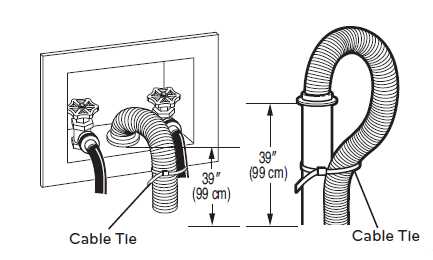
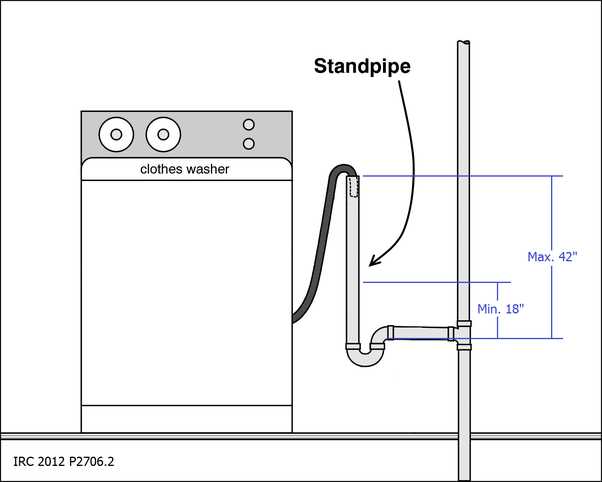
By following these preventive measures, you can significantly reduce the risk of water damage caused by your washing machine. Regular maintenance, proper installation, and cautious use are key to keeping your home safe and dry.
Ensuring Proper Drainage
Proper drainage is essential for your washing machine to function effectively and prevent any potential damage. Here are some steps you can take to ensure the proper drainage of your washing machine:
1. Check the drain hose

Inspect the drain hose to ensure it is not bent or twisted. A kinked or clogged drain hose can impede the flow of water, leading to drainage issues. Straighten out any bends or replace the hose if necessary.
2. Elevate the drain hose
Elevating the drain hose can help prevent water backflow and improve drainage. Position the drain hose so that it is higher than the water level in the washer tub. This helps create a siphon effect and allows gravity to assist in draining the water.
3. Use a drain pipe extension
If the existing drain pipe is not high enough or far away from the washer, you may need to use a drain pipe extension. This extension connects to the existing drain pipe and allows you to position the drain hose at the appropriate height for proper drainage.
4. Avoid overloading the washing machine
Overloading the washing machine with too many clothes can lead to poor drainage. The excess weight of the clothes can prevent proper water flow, resulting in clogs and drainage issues. Follow the manufacturer’s guidelines regarding the maximum load capacity of your washing machine.
5. Clean the drain pump filter
A clogged drain pump filter can restrict water flow and cause drainage problems. Regularly clean the drain pump filter to remove any debris or lint that may have accumulated. Refer to the manufacturer’s instructions for your specific washing machine model on how to access and clean the filter.
6. Check the plumbing system
If you have followed the above steps and are still experiencing drainage issues, it may be necessary to check the overall plumbing system. Ensure that the main drain line and any other connections are clear and functioning properly. Consult a professional plumber if needed.
By implementing these measures, you can ensure proper drainage of your washing machine and avoid any potential problems in the future.
Avoiding Clogging Issues
If you want to avoid clogging issues with your washing machine’s drain hose, there are a few precautions you can take:
- Regularly clean the lint filter: Lint can accumulate in the filter and eventually clog the drain hose. Make sure to clean it after every wash to prevent any blockages.
- Avoid overloading the machine: Overloading the washing machine can cause excessive amounts of lint, dirt, and debris to accumulate in the drain hose. This can lead to clogging issues over time. Be sure to follow the manufacturer’s guidelines for load capacity.
- Inspect the drain hose periodically: Check the drain hose for any signs of damage or blockages. Look for kinks, cracks, or any objects obstructing the flow of water. If you notice any issues, repair or replace the hose as necessary.
- Use a lint trap: Consider using a lint trap or lint catcher on the end of the drain hose. This will help to catch any lint or debris before it enters the hose and potentially causes clogs.
- Properly install the drain hose: Ensure that the drain hose is properly installed, without any extreme loops or twists. A smooth and unrestricted flow of water will help prevent clogging issues.
By following these tips, you can significantly reduce the chances of experiencing clogging issues with your washing machine’s drain hose. Regular maintenance and proper usage will help to keep your machine running smoothly and efficiently.
Extending the Lifespan of Your Washing Machine

If you want to get the most out of your washing machine and avoid costly repairs or replacements, it’s essential to take proper care of it. By following a few simple maintenance tips, you can extend the lifespan of your washing machine and ensure it continues to work efficiently for years to come.
1. Clean the drum regularly
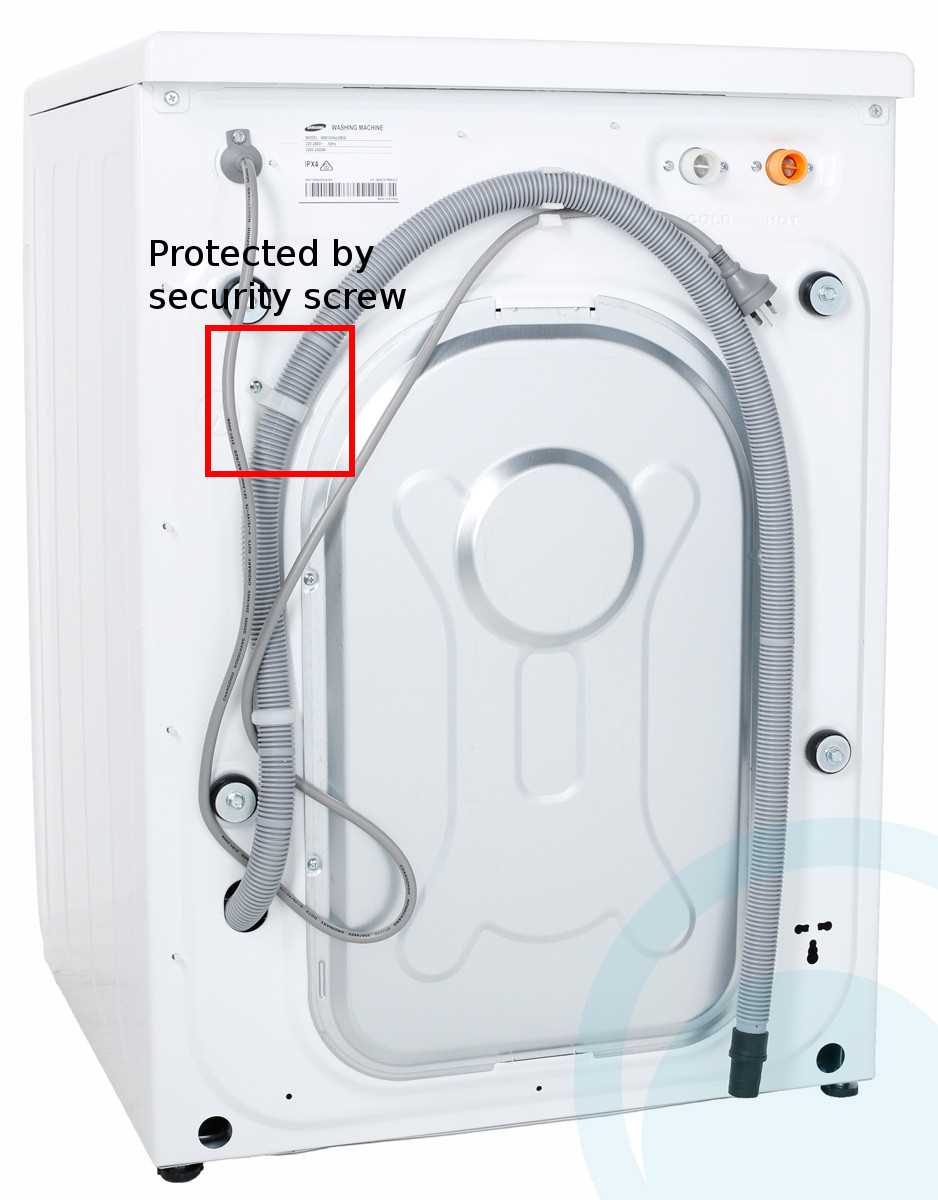
Over time, detergent residues, fabric softeners, and dirt can build up inside the drum of your washing machine. This buildup can lead to unpleasant odors and affect the performance of the machine. To prevent this, it’s important to clean the drum regularly. You can do this by running an empty cycle with hot water and a cup of white vinegar or a specialized washing machine cleaner.
2. Check and clean the filters
Most washing machines have filters that catch lint, hair, and other debris from the clothes. These filters help prevent clogs in the drain pump and improve overall performance. Make sure to check and clean the filters regularly to ensure they’re not clogged. Refer to your washing machine’s manual for instructions on how to locate and clean the filters.
3. Don’t overload the machine
While it may be tempting to fit as many clothes as possible into a single load, overloading the washing machine can put unnecessary strain on its motor and other components. This can lead to premature wear and tear, reducing the lifespan of the machine. Always follow the manufacturer’s guidelines for load capacity to avoid overloading.
4. Use the right amount of detergent
Using too much detergent can lead to excessive suds and residue buildup in your washing machine. Conversely, using too little detergent may not clean your clothes effectively. Consult the detergent packaging or your washing machine’s manual for guidance on the appropriate amount of detergent to use for different load sizes and water hardness levels.
5. Inspect and adjust the hose connections
Regularly check the hose connections of your washing machine for any signs of leaks, cracks, or bulges. Ensure that the hoses are securely attached and free from kinks or twists. If you notice any issues, replace the hoses immediately to prevent water damage and prolong the life of your washing machine.
6. Avoid excess detergent and fabric softener
Using excessive amounts of detergent or fabric softener can not only lead to residue buildup but can also cause unnecessary wear on the machine’s components. Follow the recommended dosage instructions on the detergent packaging to avoid these issues and improve the longevity of your washing machine.
7. Keep the machine level
A washing machine that is not level can cause excessive vibrations and noise during operation. This can damage the machine and potentially disrupt nearby items. Use a spirit level to check if the machine is level and adjust the feet accordingly to ensure it sits securely on the floor.
8. Schedule professional maintenance
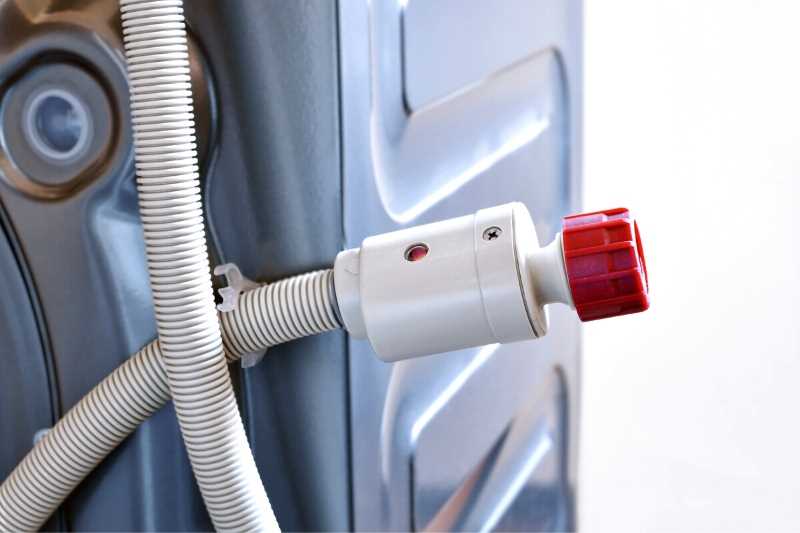
While regular cleaning and maintenance can go a long way in extending the lifespan of your washing machine, it’s also a good idea to schedule professional maintenance. A qualified technician can inspect the machine, clean hard-to-reach parts, and identify any potential issues that may need attention.
By following these tips and implementing a regular maintenance routine, you can significantly extend the lifespan of your washing machine. This will not only save you money on repairs or replacements but also ensure that your machine continues to perform at its best for many years.
Enhancing the Efficiency of Your Laundry Routine
Introduction
Doing laundry is a crucial part of our daily lives, and having an efficient washing machine can greatly enhance the speed and effectiveness of this task. In this article, we will explore some tips and tricks to optimize your laundry routine and make the most out of your washing machine.
Sorting Clothes
An important step in an efficient laundry routine is sorting your clothes. Separate your clothes into different piles based on color, fabric type, and level of dirtiness. This will help prevent color bleeding, protect delicate fabrics, and ensure better cleaning results.
Choosing the Right Wash Cycle
Modern washing machines come with a variety of wash cycles tailored for different types of clothes. Take advantage of these options to optimize your laundry routine. For heavily soiled clothes, choose a longer and more intensive wash cycle. For delicate fabrics, opt for a gentle or hand wash cycle to prevent damage. Additionally, using a quick wash cycle for lightly soiled clothes saves both time and energy.
Using the Proper Amount of Detergent
Using the right amount of detergent is essential for achieving clean and fresh-smelling clothes. Follow the manufacturer’s guidelines for measuring the detergent, taking into account the load size, degree of soiling, and water hardness. Using too much detergent can result in excessive suds and residue, while using too little may lead to poor cleaning results.
Maximizing Load Size
To make your laundry routine more efficient, try to maximize the load size without overstuffing the machine. Washing full loads of laundry instead of small ones helps to save water, energy, and time. However, avoid overloading the machine, as this can negatively impact the effectiveness of the wash and may cause damage to both the clothes and the machine.
Properly Positioning the Drain Hose
Ensuring proper positioning of the drain hose is crucial for the efficient operation of your washing machine. Elevating the drain hose prevents water from flowing back into the machine, potentially causing damage or flooding. You can elevate the hose by using a laundry standpipe or by attaching it to a hook or bracket on the wall.
Maintaining and Cleaning Your Washing Machine
To keep your washing machine running efficiently, it is essential to perform regular maintenance and cleaning. Clean the drum, detergent drawer, and rubber gasket regularly to remove any residue, lint, or mold. Run an empty hot water cycle with vinegar or a washing machine cleaner to eliminate any build-up and keep your machine odor-free. Additionally, check and clean the filter regularly to ensure proper drainage and prevent clogs.
Conclusion
By incorporating these tips into your laundry routine, you can greatly enhance the efficiency of your washing machine and achieve cleaner and fresher clothes. Remember to sort your clothes, choose the right wash cycle, use the proper amount of detergent, maximize the load size, position the drain hose correctly, and regularly maintain and clean your machine. Happy laundry days ahead!
FAQ
Why do I need to elevate the drain hose of my washing machine?
You need to elevate the drain hose of your washing machine to prevent backflow of water into the machine. Elevating the hose ensures that water can flow out of the machine properly and prevents any potential damage or flooding.
How high should I elevate the drain hose of my washing machine?
The drain hose of your washing machine should be elevated at a height of at least 3 feet above the ground. This height ensures proper water flow and prevents any backflow into the machine.
What happens if I don’t elevate the drain hose of my washing machine?
If you don’t elevate the drain hose of your washing machine, there is a risk of water backflowing into the machine. This can lead to damage to the machine, flooding, and potential water leakage.
Can I use a drain hose extension instead of elevating the hose?
While using a drain hose extension is an option, it is recommended to elevate the drain hose instead. Elevating the hose ensures proper water flow and reduces the risk of backflow, while an extension may not provide the same level of protection.
Are there any alternatives to elevating the drain hose of my washing machine?
If elevating the drain hose is not possible, you can use a drain hose stand or a wall hook to secure the hose at a higher position. These alternatives can help maintain proper water flow and prevent backflow into the machine.











